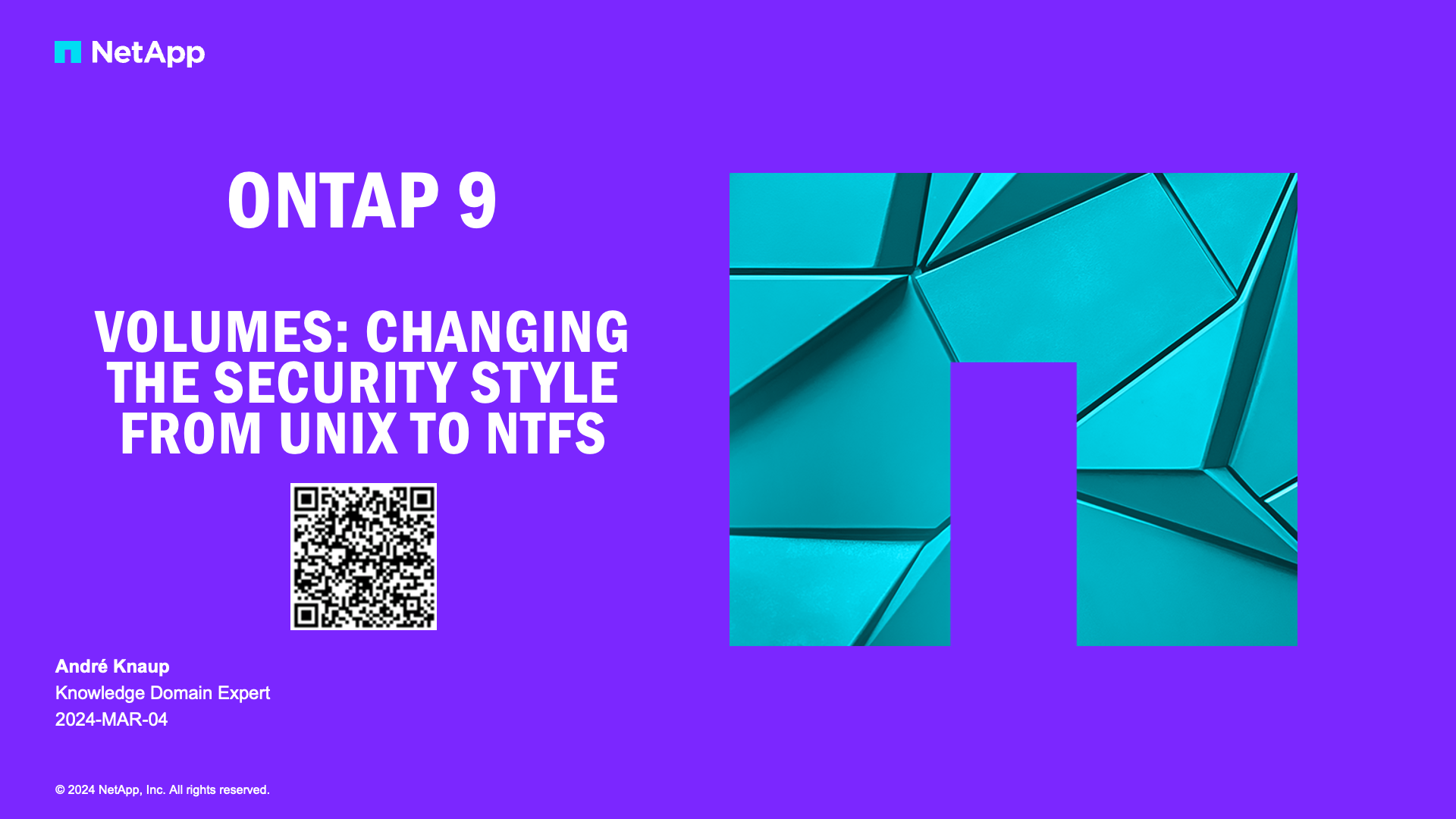Active IQ Unified Manager Discussions
- Home
- :
- Active IQ and AutoSupport
- :
- Active IQ Unified Manager Discussions
- :
- Protection Manager questions
Active IQ Unified Manager Discussions
- Subscribe to RSS Feed
- Mark Topic as New
- Mark Topic as Read
- Float this Topic for Current User
- Bookmark
- Subscribe
- Mute
- Printer Friendly Page
- Mark as New
- Bookmark
- Subscribe
- Mute
- Subscribe to RSS Feed
- Permalink
- Report Inappropriate Content
Hello,
I performed an OSSV demo for my customer late last week. It seemed to go very well but I did have a few take away questions regarding Protection Manager.
1. If a customer has a large environment (1000+ OSSV hosts), how would their operations determine what jobs failed? Would they scroll through the events in Protection Manager or use SNMP to send them to another application like OVO?
2. Can we export the events/jobs from Protection Manager to excel or ???
3. How are other customers setting up their policies within Protection Manager?
a. One policy for each client
b. One policy for all clients
c. Multiple policies based on ???
d. Similar clients in similar policies
e. One policy for C drives, one for D drives, etc.
4. Should protection manager be installed on all workstations for administration of OSSV?
a. Other than a license for Protection Manager, is anything else required other than the management console on the admin workstation? ( I believe this is it)
b. Where does protection manager get and store it’s configs/information? (On the Filer, correct?)
5. Will there be a web based admin page for protection manager in the future like Ops Manager/FilerView?
I will be starting the POC at the customer site today and this is a very competitive opportunity as we are competing against PureDisk and Avamar so the sooner I can get the answers back, the better.
Thanks in advance!
Cheers,
Jeff
- Mark as New
- Bookmark
- Subscribe
- Mute
- Subscribe to RSS Feed
- Permalink
- Report Inappropriate Content
Hi Jeff,
Can you move this to thread to "Sales Engineering Community" ?
I shall answer all there.
regards
adai
- Mark as New
- Bookmark
- Subscribe
- Mute
- Subscribe to RSS Feed
- Permalink
- Report Inappropriate Content
Hi Jeff,
I have moved this to sales engineering community with the same Topic.
regards
adai
- Mark as New
- Bookmark
- Subscribe
- Mute
- Subscribe to RSS Feed
- Permalink
- Report Inappropriate Content
1. How to monitor job failures.
There are a couple of approaches. I'd start by creating resource groups to hold your OSSV hosts and datasets, then use the NMC group filter to narrow down the number of systems you're double checking.
Once you've filtered, from the jobs page, you can show only jobs which failed or partially succeeded. That lets you skip over the jobs which worked and only focus on the ones with problems. We generate events based on job failures, which you can configure to send SNMP traps or emails if you want to be alerted immediately upon job failure.
At a higher level, you can use the lag settings to tell whether successive jobs have failed. The idea is to set the lag warning threshold in the policy so that it only triggers if (say) two jobs in a row fail and the lag error threshold such that you get a lag error if three in a row fail. This is a good plan if backups are somewhat unreliable and just retrying at the next scheduled time usually clears up the problem.
2. How to view job details in Excel.
All the job listing and details can be exported in text and perl formats. You'd have to write a script to turn that into a spreadsheet if you want to view it in Excel.
3. How to set up datasets for 1000 hosts.
This is largely a personal preference so I can't make a blanked recommendataion. All the suggestions you listed are good ones except I'd avoid one policy per host. The general idea is to have a small number of policies and a larger number of datasets. You'd have one policy for each type of OSSV host and then can either create one dataset per host or put multiple hosts in a single dataset.
If you don't want to protect C: drives, the easiest way to do that is to use the OSSV ignored directories and files lists to avoid backing up C:\Windows or pagefile.sys. If you want to back up the C: drives with one policy an the 😧 drives with a different one, that will require creating two datasets and adding the drives one at a time. That's tedious from the GUI for 1000 hosts but easily scriptable.
4. Where to install NMC client.
You can freely install the Protection Manger GUI anywhere you've got network connectivity. Nothing critical or sensitive is stored on the administrator's workstation, not even the DFM server login credentials. All the critical Protection Manager data is stored in the DFM server database, not on the storage system. It is crucial to ensure that is a reliable server.
5. Is there a web based GUI in the works.
You'll need to talk to the product managers about that, I can't comment on future plans.


